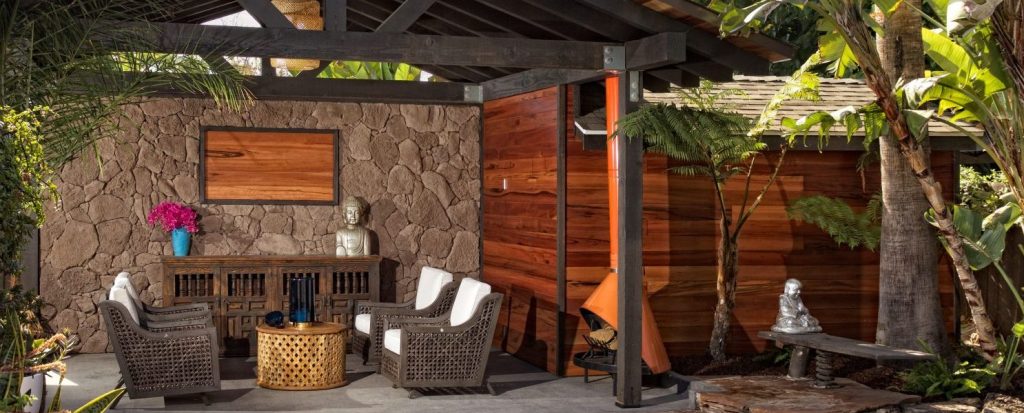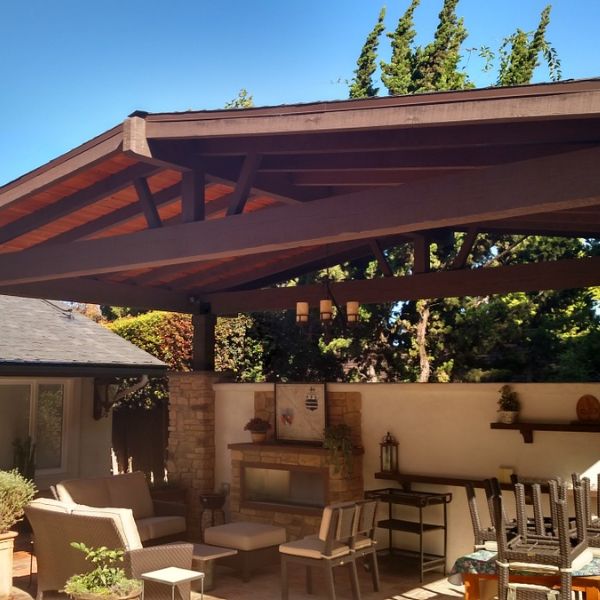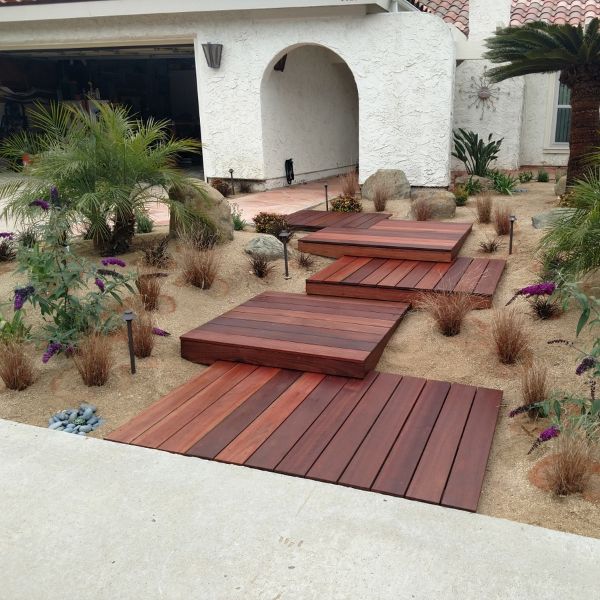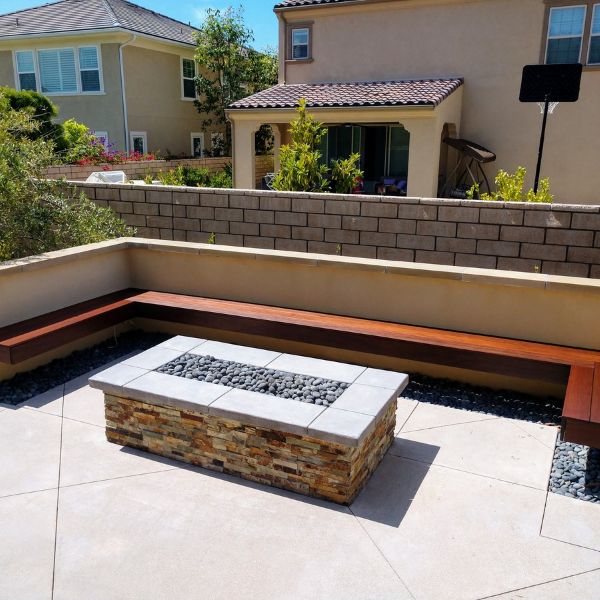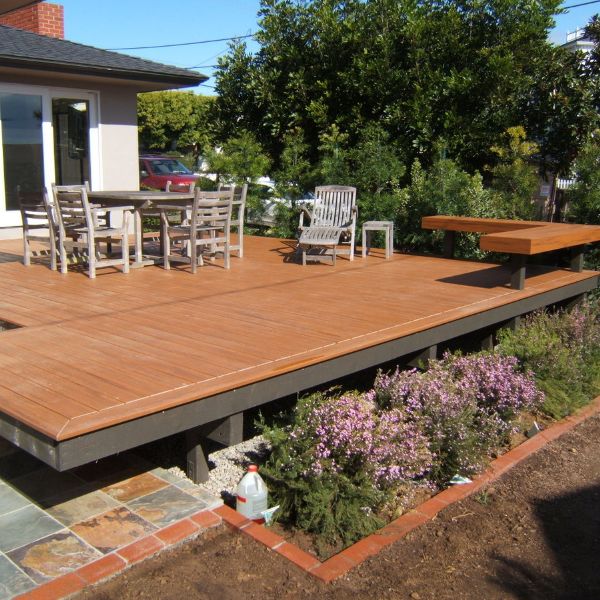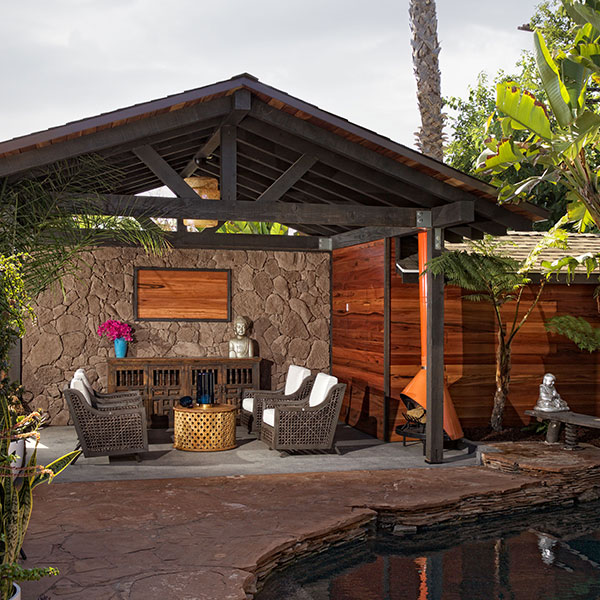Create a Beautiful Water Wise Landscape in San Diego
In the heart of an ever-evolving world, the challenge of creating a water-wise backyard that perfectly blends hardscaping and softscaping techniques is more compelling than ever. Do you dream about a stylish, resilient garden that achieves water efficiency and upscales your home’s aesthetic allure?
If so, our San Diego landscape contractor, Jeff Wilson, will show how melding landscape elements with creativity can craft an astonishingly eco-friendly sanctuary right in your backyard! Contact Jeff Wilson today by calling (619) 838-1398 to get started.
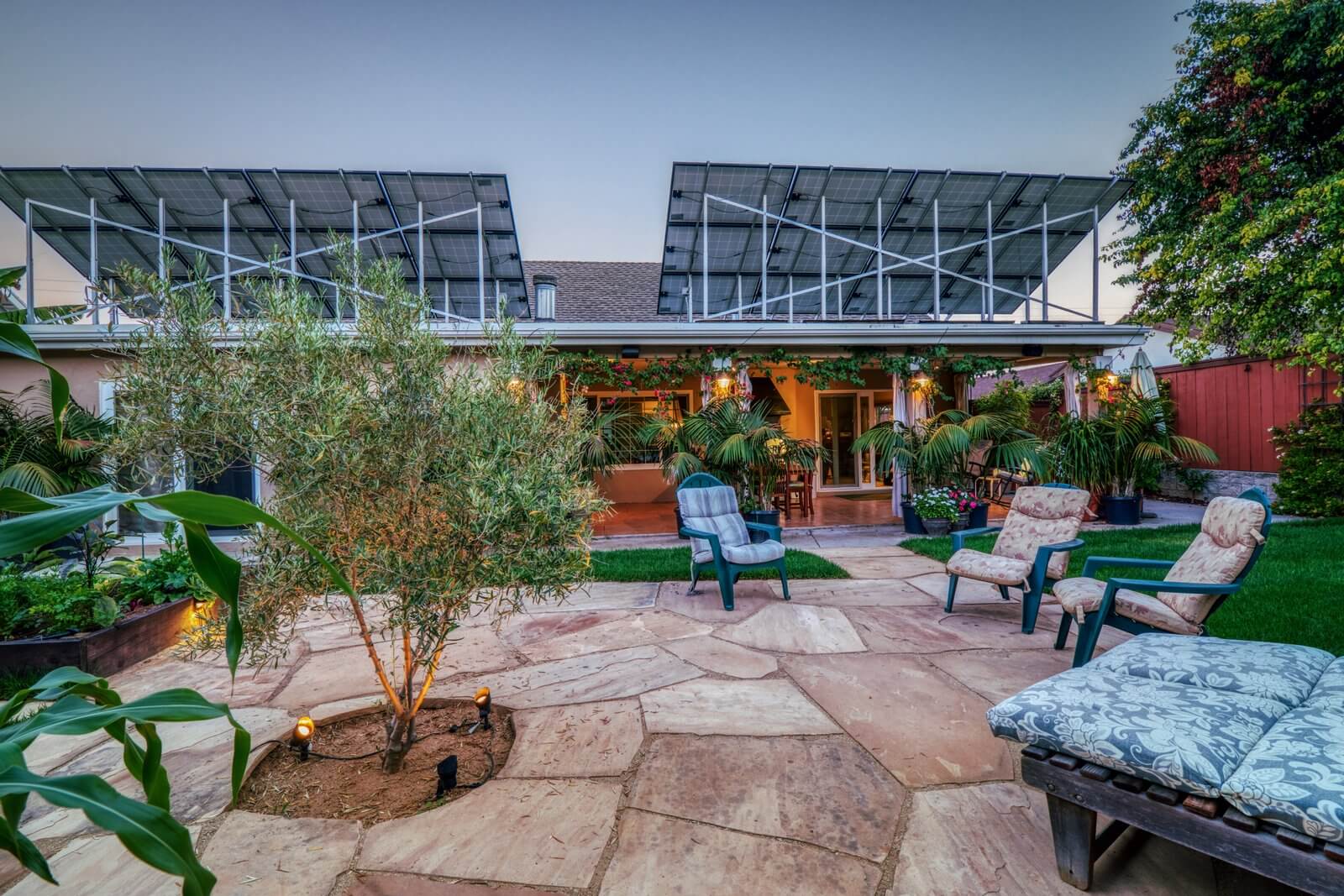
Designing the Ideal Water-Efficient Landscape With A Fusion of Hardscape and Softscape Elements
Achieving a harmonious and water-wise backyard design requires striking a careful balance between hardscaping and softscaping elements. While hardscaping provides functionality and enjoyment to an outdoor living space, softscaping adds beauty, shade, and cooling power.
When planning your landscape design, it’s essential to consider several factors that influence the balance between these two components:
- Intended use of the space: More hardscaping like a patio, walkways, and other constructed features should be included if the yard will mainly be used for entertaining guests and gatherings. If you want to create a relaxing refuge and natural oasis, focus more on softscaping elements like trees, flowering plants, bushes, and lawn areas.
- Evaluate the maintenance requirements: Softscaping components like lawns and garden beds will require more regular care, such as mowing, pruning, and tending to plants. Incorporating more hardscaping is a good option to reduce maintenance and upkeep time.
- Consider your household composition: Families with young children often benefit from open lawn areas for playing as well as safe, durable play surfaces like artificial grass under equipment. Older adults frequently prefer paved pathways and shaded seating spaces amidst planted flower beds, trees, and gardens.
- Assess the amount of space available: Smaller yards can maximize usable area through multifunctional hardscapes like a patio that serves as a dining space and a relaxing lounge. Larger backyard spaces allow room for more expansive lawn expanses along with deep garden beds and landscaping.
- Factor in the local climate conditions: Hot, arid climates call for shade trees, get covered structures like pergolas, and drought-tolerant plant varieties to save water. Cooler regions give you more flexibility in plant selection and allow for more lawn area if desired.
Factors That Influence Hardscape and Softscape Selection
When designing your water-wise backyard, several key factors should guide your choices regarding hardscapes and softscapes, including:
- Personal Preferences: Your personal preferences should help define the features you wish to incorporate into your backyard space. Do you want to include shade trees, edible plantings, designated utility areas for compost or storage, or an outdoor kitchen? Defining your ideal features will provide direction when selecting both hardscapes and softscapes.
- Choose Water-Efficient Materials: In drought-prone regions, opt for water-efficient hardscape materials such as permeable paving and pavers to allow rainwater infiltration. Softscape elements like rainwater harvesting systems and climate-appropriate plants can also limit irrigation requirements. Sustainable water use should be a priority consideration.
- Privacy: Privacy is another factor that may impact your choices. Incorporating fences, tall shrubs, trees, climbing vines on trellises, or other hardscape and softscape features can help create secluded spaces within your yard.
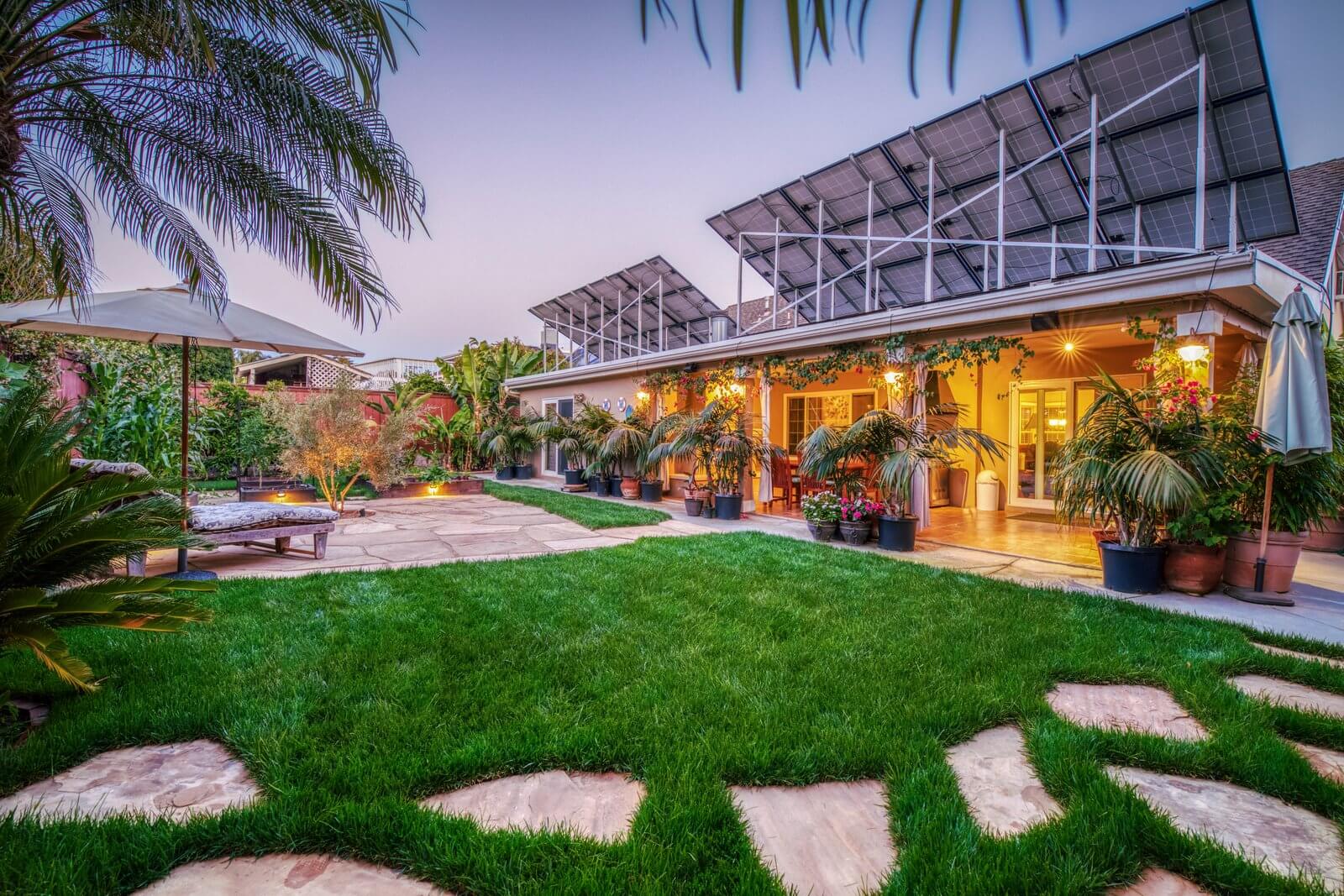
Drought-Resistant Choices for Softscaping
When creating a water-wise backyard, it’s important to choose plants that can thrive in arid conditions with minimal watering.
Succulents and Cacti
- Sedum are colorful, low-growing succulents that are perfect for rock gardens, as they need very little water once established.
- Echeveria are decorative succulents that form rosettes of fleshy leaves and come in various hues like green, pink, and red. They add visual interest to the garden.
- Saguaro are the iconic large columnar cacti that can grow over 40 feet tall. These striking cacti are well-suited for dry climates.
- Barrel cacti are large, round, bulbous cacti that produce edible fruit. They bring a unique desert flair to backyard landscapes.
Herbs
- Rosemary is an aromatic herb with needle-like leaves and a shrub-like growth habit. It thrives in dry conditions once established and adds a pleasant fragrance.
- Lavender produces fragrant violet flowers atop silvery foliage. It evokes tranquility and is extremely drought-tolerant.
- Oregano is a hardy, versatile herb perfect for containers or as a drought-resistant groundcover in garden beds.
Groundcovers
- Blanket flower, also called Gaillardia, is a daisy-like perennial that produces vibrant, boldly colored blooms. It covers open areas well and requires minimal watering.
- Yarrow, also called Achillea, is an airy, fern-like perennial that forms mats of foliage covered with clusters of small white or pink flowers. It excels as a drought-tolerant groundcover.
Vines
- Passion Flower is a vigorous climbing vine with unique, ornate blooms in lavender, pink, and white. It thrives in hot conditions.
- Crossvine is an excellent climbing plant for arbors or trellises. It produces abundant orange, trumpet-shaped blooms.
Native Plants and Groundcovers
Native plants and groundcovers play an integral role in achieving a water-wise backyard. These species are naturally adapted to the local climate, making them well-suited to withstand dry conditions without excessive watering or maintenance.
Here are some native plants you can include:
- Black-Eyed Susan (Rudbeckia) — This native perennial has evolved to thrive in local conditions with minimal water. Its bright golden-yellow blooms add cheer to your landscape.
- Rose Campion (Lychnis coronaria) — The silver-gray foliage and vivid magenta flowers of this tough perennial provide color without extra water.
- Penstemon — This native wildflower comes in varieties with purple, pink, or white blooms.
- California Lilac (Ceanothus) — This hardy shrub has clusters of blue flowers and requires little irrigation once established.
Incorporating groundcovers in your water-wise backyard helps reduce soil erosion, retain moisture, and suppress weed growth. Groundcovers you can include are:
- Creeping Thyme (Thymus serpyllum) — A low-growing drought-resistant groundcover with pink/purple flowers that suppress weeds.
- Woolly Yarrow (Achillea tomentosa) — This native ground cover has fuzzy foliage and yellow blooms. It needs no mowing or trimming.
- Trailing Lantana (Lantana montevidensis) — The purple flowers of this low, spreading ground cover attract butterflies while resisting drought.
- Sedum (Stonecrop) — Succulent ground cover excellent for rock gardens. Varieties have yellow, pink, or white blooms.
Efficient Hardscaping Materials and Techniques
Efficiency is key in creating a water-wise backyard. Choosing the right materials and employing smart techniques can help you reduce water consumption and maintenance, while still achieving a beautiful and functional outdoor space.
Permeable Paving
When it comes to materials, one option to consider is permeable paving. These surfaces allow rainwater to soak through rather than runoff, reducing the need for irrigation and preventing water wastage. Permeable pavers can be made of various materials such as natural stone, concrete, or even recycled materials. They’re eco-friendly and aesthetically pleasing with their textured surfaces.
Xeriscaping
To further enhance water efficiency, incorporating xeriscaping principles is paramount. Xeriscaping involves using drought-tolerant plants that require minimal water and maintenance. By carefully selecting native or adapted plant species, you can create a vibrant and colorful landscape without excessive watering needs. Additionally, grouping plants with similar water requirements together in specific zones can make irrigation more efficient.
Contouring
A technique to consider is contouring the ground to direct rainwater towards planted areas instead of letting it run off. Our San Diego landscape contractor can achieve this by grading slopes and creating berms or swales that help capture and retain water. Not only does this prevent erosion, but it also provides natural irrigation for your plants.
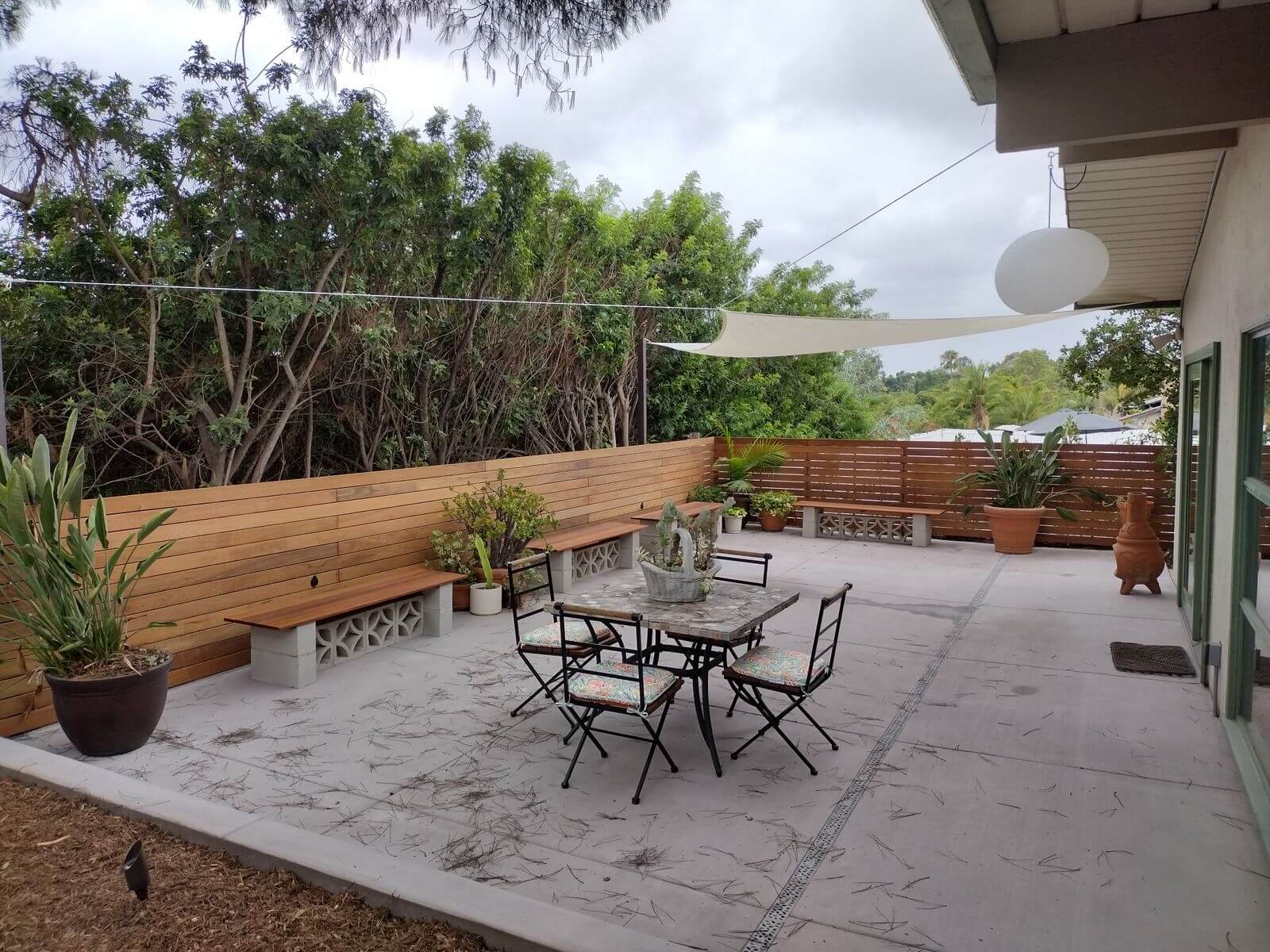
Selecting and Arranging Hardscape Elements
When selecting and arranging hardscape elements in your waterwise backyard, there are several factors to consider. The goal is to strike a balance between functionality, aesthetics, and sustainability:
- Take into account the purpose of each element. Choose options suitable for your desired style and functionality.
- Consider the overall size and layout of your space. Carefully arrange hardscape elements to maximize usability and purpose without appearing crowded or sparse in the available space.
- Create visual continuity and harmony in the landscape by repeating certain shapes and patterns among different hardscape components. Using circular shapes in both paved areas and planting beds, for instance, can provide cohesion through linked design motifs across the space.
- Strategically place hardscape features with thought given to how each element complements the overall landscape design. Arrange pieces purposefully, like putting together a puzzle, with each component contributing to the unified backyard vision.
Transform Your Backyard With the Right Landscape Balance
Want to create your ideal backyard space? Contact Wilson Woodscape at (619) 838-1398 today for a customized landscape design focused on merging aesthetic appeal and everyday function. Our San Diego landscape team brings decades of experience in hardscaping, softscaping, and sustainable practices. Let’s discuss your vision!

